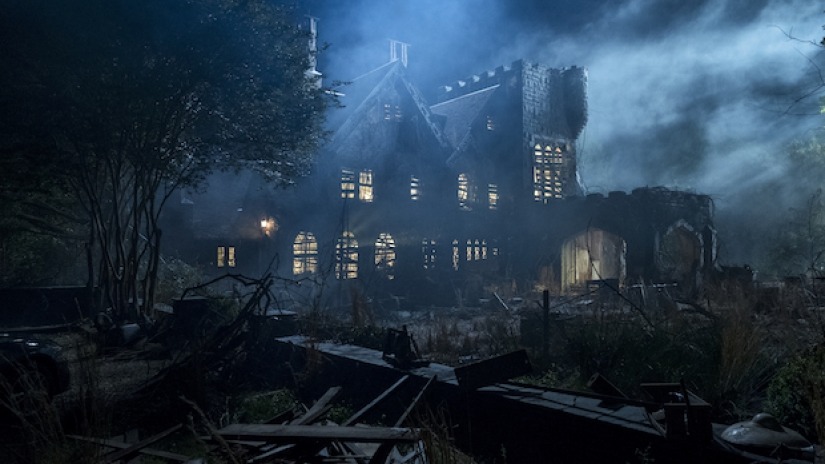Warning: contains plot details for both the Netflix series and the original novel.
“Way more of a riff than an adaptation,” is how writer-director Mike Flanagan describes his The Haunting Of Hill House Netflix horror. “There’s just enough material in the book to make an amazing movie,” he told Den Of Geek, but not enough to adapt into a ten-hour TV series without adding to the story. Not wishing to go up against the acclaimed 1963 film version by attempting to “out-adapt Robert Wise,” Flanagan and co. took a different approach.
“Look at it as a remix,” he told us. “It was more interesting to break down the book and pull out the characters and the themes and individual moments and pieces of prose, even, that had really stuck with me, and try to rearrange it.”
Here’s how those pieces were rearranged…
The Haunting Of Hill House 1959
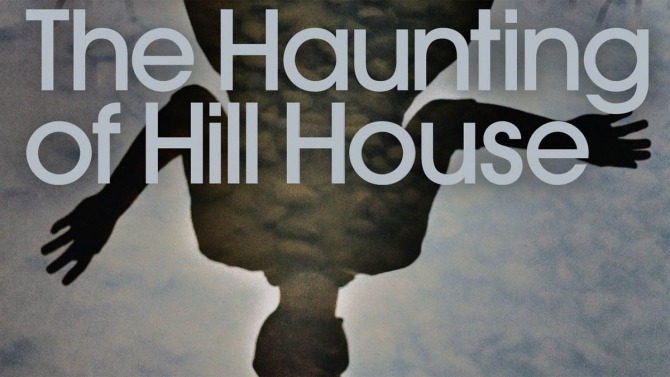

The original novel is about thirty-two-year-old Eleanor Vance, who has spent her life caring for her invalid mother. After her mother dies, Eleanor is forced to move in with her sister and brother-in-law, sleeping in the baby’s room. When Eleanor receives an invitation from Dr John Montague, a researcher in the supernatural, to join a party planning to spend a summer at Hill House, rented for the occasion because of its ghastly and rumoured to be ghostly history, Eleanor sees a chance to escape her life. She steals the car she half-owns with her sister and takes the trip. Dr Montague had selected Eleanor because of a newspaper report on a mysterious rain of stones that once fell on her childhood home, thought to be supernatural in origin.
At Hill House, Eleanor meets the unwelcoming Mr and Mrs Dudley, caretaker and housekeeper, who refuse to remain on the property after dark. She discovers the house to be deranged, a disorienting cacophony of architectural design that’s dark, oppressive and whose geography it’s impossible to fathom. There, she meets and befriends Theodora, her neighbour in the research proposal and a woman believed to have psychic tendencies. They meet Dr Montague and the final guest, Luke Sanderson, who has been included in the party at the behest of the house’s current owner, his aunt. Luke will one day inherit Hill House.
Eleanor tells little lies about her life to the other guests. She describes a house she saw on her journey as her own, and pretends to own a “cup of stars” that she heard discussed by a family of strangers while dining in a restaurant on her way to Hill House. Despite an early fondness for Theo, Eleanor soon begins to feel persecuted by her, and develops a sense of paranoia about the other guests talking behind her back.
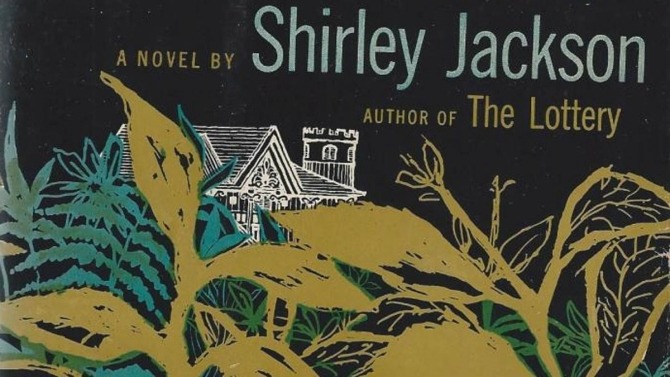
Dr Montague encourages his three guests to make notes on their experiences of Hill House. They discover mysterious drops in temperature, violent knocking on the doors and a dog-like creature running through the ground floor. Writing appears in blood along the wood panelling, asking Eleanor for help. Theodora’s room is ransacked and her clothes covered in blood (though her things are later found to be untouched).
After several such occurrences, Eleanor begins to feel an affinity with the house. Her paranoia and guilt, and her fear of the knocking sound (which she takes to be the sound of her dying mother knocking on the wall for medication Eleanor never brought her) conflate until one night, in what might be described as a manic episode, she runs through the house, scaring the other guests, and climbs up a vertiginous and rickety spiral staircase. Luke brings her back down and the others force her to leave the next day, contacting her sister and discovering the lies she told.
Not wanting to leave, having nowhere to go and feeling that Hill House was where she belonged, Eleanor deliberately accelerates her car into a tree on the way out of the house, presumably killing herself. Dr Montague’s research is unsuccessful on publication, and he gives up his interest in the supernatural. Hill House though, not sane, remains.
The Haunting Of Hill House 2018
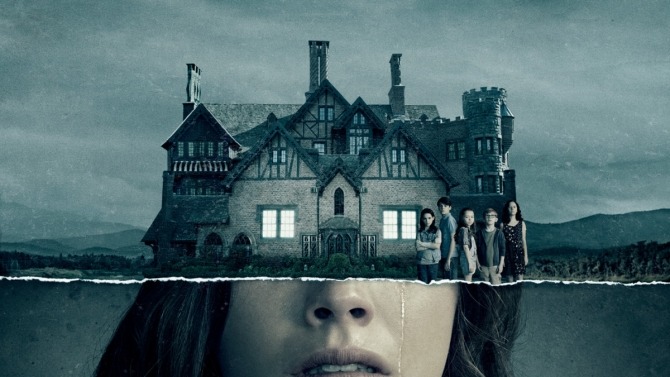

One summer in the 1980s, Hugh and Olivia Crain buy Hill House to flip for profit, moving in with their five children—Steven, Shirley, Theodora and twins Nel and Luke—during the renovation works. Nel complains of seeing a “bent-neck lady” ghost, but is reassured by her father that she’s just dreaming. Luke befriends a strangely dressed little girl who, he says, lives in the woods near the house. The family experience myriad strange occurrences during their time in the house, including strange cold spots (as experienced by the characters in Jackson’s novel), and a mysterious locked door that no key is able to open. The mother, Olivia Crain, becomes affected and disturbed by the house.
Unlike Jackson’s novel, the Netflix show’s chronology jumps around considerably. Each episode moves between the events of the summer at Hill House, and the lives of the grown-up Crain children. In the present, Steven is a successful author having written a bestseller The Haunting Of Hill House, which starts with the same opening paragraph as Shirley Jackson’s novel, including the line “whatever walked there, walked alone.”
A failed historical novelist, Steven’s best-selling memoir about his family’s time at Hill House estranged him from his siblings who saw it as exploitative of their shared experience at the house, an experience that has affected them all in different ways. Luke is a drug addict in and out of rehab, Nel is a depressive, Theo is a child psychologist with a fear of commitment, and Shirley runs a funeral home with her husband.
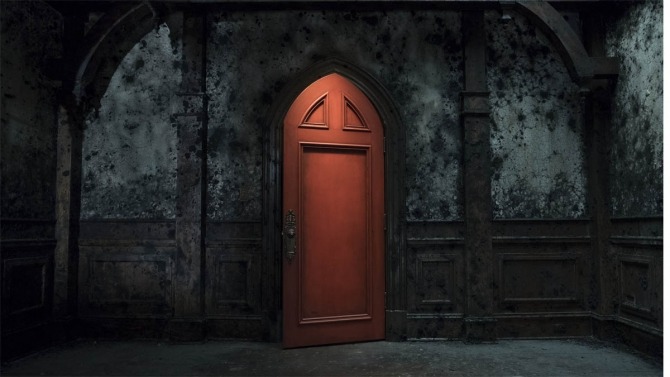
While Nel (Eleanor), Luke and Theodora all share the same names as characters in Jackson’s novel, they aren’t the same characters. (One connection is that modern-day Theo is a lesbian, linking her to her namesake in the book, who, the subtext of the novel strongly suggests was also in a cohabiting relationship with another woman, but that’s more or less it). Eldest daughter Shirley is named for Shirley Jackson, while the Crain father Hugh shares his name with Hill House’s original designer in the novel.
Only two characters, stern caretaker and housekeeper Mr and Mrs Dudley, survive intact from the novel to the TV series, though modernised and expanded with a full backstory. Mr Dudley tells Hugh Crain that his mother was the original housekeeper at the property (perhaps the Mrs Dudley in the novel?) and that he was born in the cottage at the edge of the estate.
Other nods to Shirley Jackson and the original are dotted around Flanagan’s story. In one scene Theo is reading a copy of Jackson’s famous The Lottery And Other Stories. The novel’s account of Eleanor and her sister experiencing the telekenetic rain of stones as children is borrowed for a monologue by one central character.
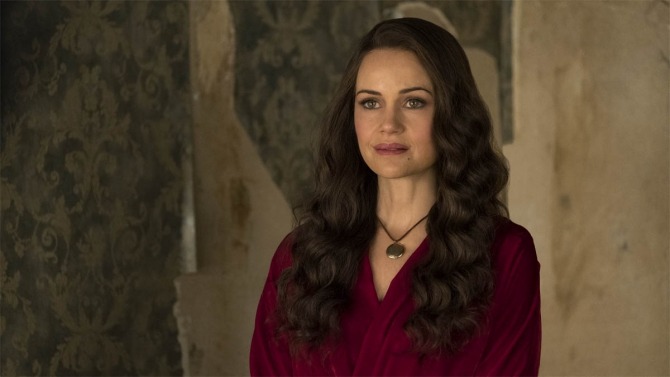
The house itself, with its marble statuary and monumental spiral staircase, has been rendered faithfully. Its competing architectural styles and sense of derangement are achieved through dark walls and disorienting design.
There are multiple nods to other parts of the book in the Netflix series, references to Eleanor’s “little cup of stars”, and quotes from Shakespeare (Olivia Crain quotes from Hamlet just as Eleanor Vance repeatedly quotes from Twelfth Night in the novel). There are deaths,
While both tell a horror story about the same not-sane house that is grounded in psychological realism and features many of the same rich details, they’re entirely different stories, not least in their respective endings. The novel closes on a note of unfinished tragedy, while Flanagan’s complex, emotional series tempers its tragedy with resolution, healing and hope.
The Haunting Of Hill House is out on Netflix now.

